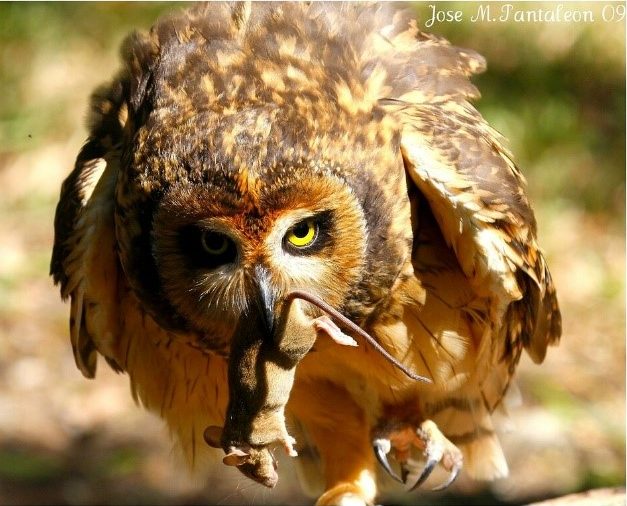Birdfinding.info ⇒ The West Indian form of Short-eared Owl is uncommon and local across most of its range. On Puerto Rico, it is found most often in the coastal lowlands of the northwest (especially Hacienda La Esperanza) and southwest. In the D.R., where there are few known sites, the Cuyamasa area west of La Romana may be the most likely place to search. On Cuba, the majority of reports are from the southwestern coastal plains from Pinar del Río to the Zapata Swamp. Most Florida records are from the Keys and Dry Tortugas in late spring.
“Antillean Short-eared Owl”
Asio flammeus domingensis
Endemic to the Greater Antilles: Cuba, Hispaniola, Puerto Rico, and their satellites, including the Isle of Youth, Vieques, and Culebra.
Local resident at low densities in suitable habitat: scrubby grassland without excessive disturbance, usually near marshes or other waterbodies. Dispersive or partly nomadic within its normal range.
Occurs as a semi-regular wanderer to Florida (exceptionally to Georgia), the Bahamas, and the Cayman Islands. Most or all such birds have been found in spring and summer, evidently dispersing from Cuba after the breeding season.
Identification
Generally similar to the widespread “Northern Short-eared Owl”, but darker overall, more solid brown above, and buffier below. Unlike most “Northerns”, “Antillean” consistently shows a dark frame around its facial disk.
Structurally, “Antillean” differs from “Northern” in having shorter wings and tail, but significantly (~20%) longer legs, but these differences are not likely to be discernible in the field.

“Antillean Short-eared Owl,” A. f. domingensis, holding a rodent in its talons. (San Francisco de Macoris, Dominican Republic; December 18, 2009.) © José M. Pantaleon I.
Like other Short-eared Owls, the “Antillean” form is an open-country bird that often hunts on the wing, flying low over grasslands and marshes, with a meandering, harrier-like flight pattern that alternates between deep, floppy wingbeats and long glides. It also hunts while stationary, perched on top of a bush or fencepost, watching and waiting, then swooping down onto its prey. Largely diurnal, but also active at night and most active around dusk.
The plumage is mainly dark-brown and whitish. The upperparts are mostly dark-brown with buffy spots; and the underparts are mostly buffy with dark-brown streaks.
The streaking on the underparts is dense and thick on the chest, becoming progressively sparser on the lower breast and belly.
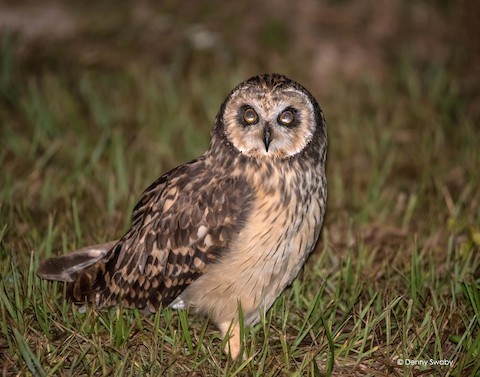
“Antillean Short-eared Owl,” A. f. domingensis— note dark brown upperparts with buffy spots and fine streaks on buffy belly. (Bodden Town, Grand Cayman; December 29, 2016.) © Denny Swaby
The eyes are vivid amber-yellow surrounded by black feathers.
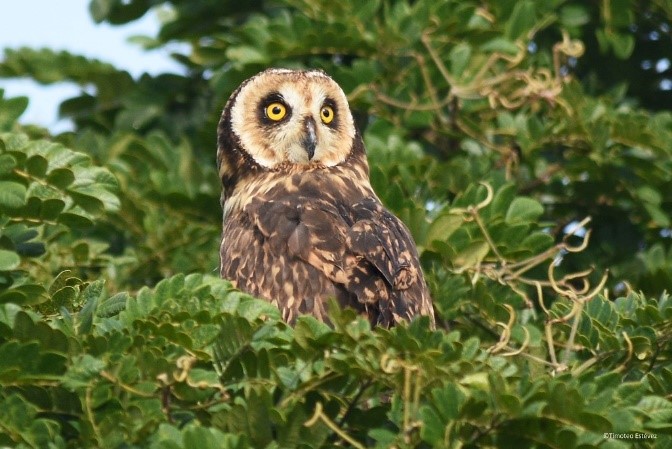
“Antillean Short-eared Owl,” A. f. domingensis, showing dark brown upperparts with buffy spots. (Dominican Republic; July 30, 2016.) © Timoteo Estévez
In flight, the upperside of the wing appears mostly brown with a large buffy or cinnamon patch in the primaries.
The underside of the wing is mostly pale with a prominent black crescent at the base of the primaries. Typically shows one or two additional dark crescents near the tips of the primaries.
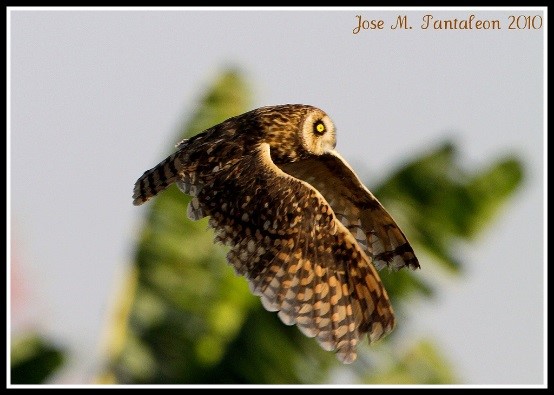
“Antillean Short-eared Owl,” A. f. domingensis, showing cinnamon patch in the primaries. (San Francisco de Macoris, Dominican Republic; April 3, 2010.) © José M. Pantaleon I.
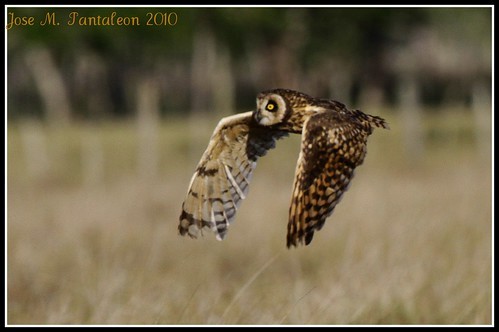
“Antillean Short-eared Owl,” A. f. domingensis—note dark crescents on the underwing. (San Francisco de Macoris, Dominican Republic; April 3, 2010.) © José M. Pantaleon I.
Notes
Polytypic form consisting of one, two, or three recognized subspecies, which are collectively one of three or four potentially distinct forms of Short-eared Owl.
Kirwan et al. (2019) recognize domingensis (Hispaniola), portoricensis (Puerto Rico), and cubensis (Cuba). Others have either considered all these populations to be a single subspecies (domingensis) or recognized portoricensis as a separate subspecies. These populations all appear to be small and mobile, readily dispersing between islands, which suggests that they effectively form a single population and lack the genetic isolation that would justify treatment as multiple subspecies.
More Images of the “Antillean Short-eared Owl”
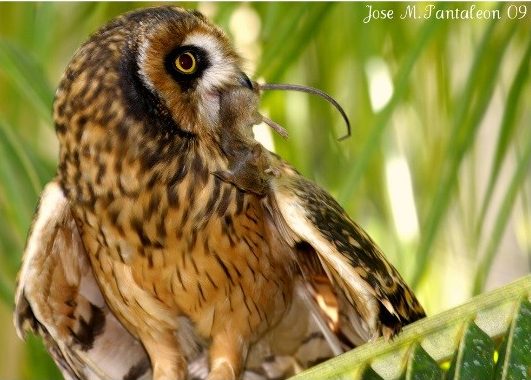
“Antillean Short-eared Owl,” A. f. domingensis, holding a rodent in its bill. (San Francisco de Macoris, Dominican Republic; December 18, 2009.) © José M. Pantaleon I.
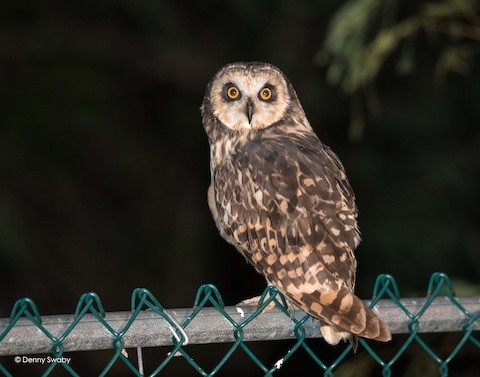
“Antillean Short-eared Owl,” A. f. domingensis, showing dark brown upperparts with buffy spots. (Bodden Town, Grand Cayman; December 29, 2016.) © Denny Swaby
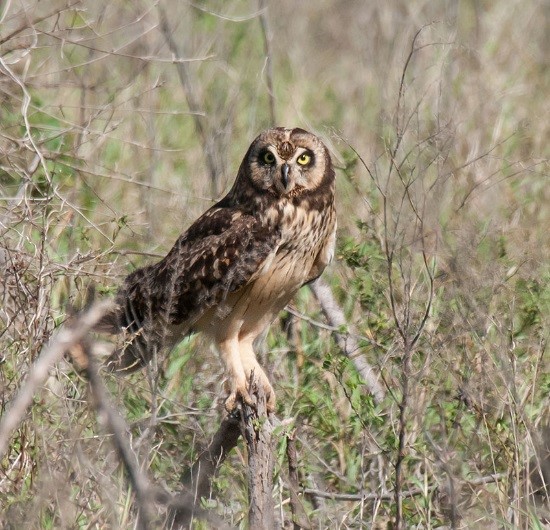
“Antillean Short-eared Owl,” A. f. domingensis—note fine streaks on buffy belly. (Cabo Rojo National Wildlife Refuge, Puerto Rico; September 21, 2012.) © Michael J. Morel

“Antillean Short-eared Owl,” A. f. domingensis, in weak light, but showing dark upperparts with buffy spots. (Dominican Republic.) © Pedro Genaro Rodríguez

“Antillean Short-eared Owl,” A. f. domingensis, showing dark brown upperparts with buffy spots. (Dominican Republic; January 31, 2013.) © Mario Dávalos P.
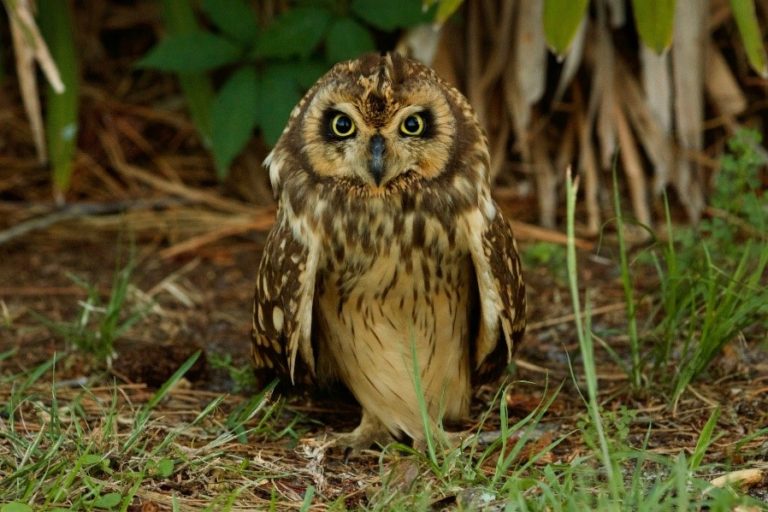
“Antillean Short-eared Owl,” A. f. domingensis, showing fine streaks on buffy belly. (Jekyll Island, Georgia; May 17, 2019.) © Ian Morrison
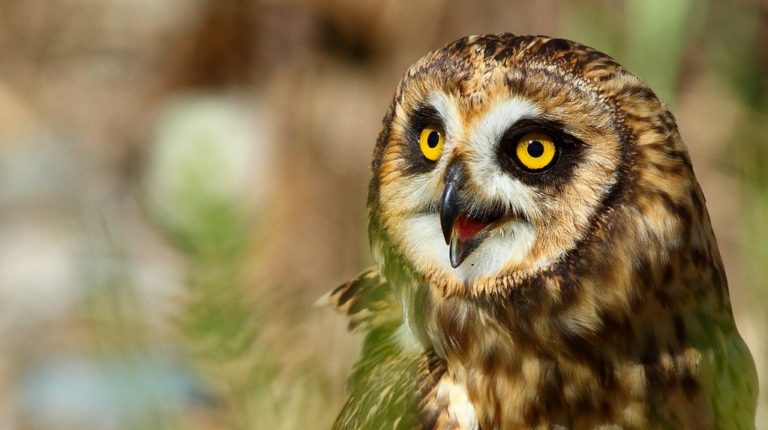
“Antillean Short-eared Owl,” A. f. domingensis. (Dominican Republic.) © Miguel A. Landestoy T.
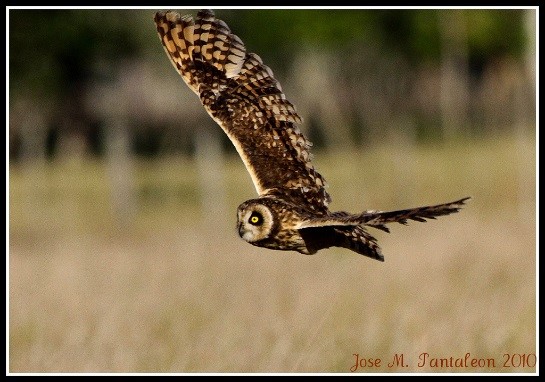
“Antillean Short-eared Owl,” A. f. domingensis. (San Francisco de Macoris, Dominican Republic; April 3, 2010.) © José M. Pantaleon I.
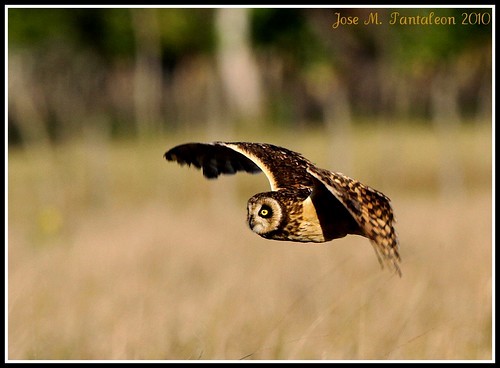
“Antillean Short-eared Owl,” A. f. domingensis. (San Francisco de Macoris, Dominican Republic; April 3, 2010.) © José M. Pantaleon I.
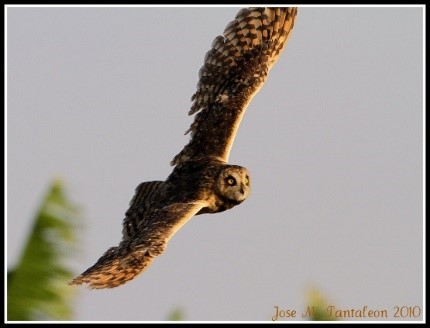
“Antillean Short-eared Owl,” A. f. domingensis. (San Francisco de Macoris, Dominican Republic; April 3, 2010.) © José M. Pantaleon I.

“Antillean Short-eared Owl,” A. f. domingensis. (San Francisco de Macoris, Dominican Republic; January 20, 2010.) © José M. Pantaleon I.
References
Alderfer, J., and J.L. Dunn. 2021. National Geographic Complete Birds of North America (Third Edition). National Geographic Society, Washington, D.C.
BirdLife International. 2021. Asio flammeus. The IUCN Red List of Threatened Species 2021: e.T22689531A202226582. https://dx.doi.org/10.2305/IUCN.UK.2021-3.RLTS.T22689531A202226582.en. (Accessed June 11, 2023.)
eBird. 2023. eBird: An online database of bird distribution and abundance. Cornell Lab of Ornithology, Ithaca, N.Y. http://www.ebird.org. (Accessed June 11, 2023.)
Enríquez, P.L., K. Eisermann, H. Mikkola, and J.C. Motta-Junior. 2017. A Review of the Systematics of Neotropical Owls (Strigiformes). In Neotropical Owls: Diversity and Conservation (P.L. Enríquez, ed.). Springer International Publishing, Cham, Switzerland.
Garrido, O.H, and A. Kirkconnell. 2000. Field Guide to the Birds of Cuba. Cornell University Press, Ithaca, N.Y.
Gemmill, D. 2015. Birds of Vieques Island, Puerto Rico: status, abundance, and conservation. Special issue of The Journal of Caribbean Ornithology.
Hoffmann, W., G.E. Woolfenden, and P.W. Smith. 1999. Antillean Short-eared Owls Invade Southern Florida. Wilson Bulletin 111:303-313.
iNaturalist. 2023. https://www.inaturalist.org/. (Accessed June 11, 2023.)
Kirwan, G.M., A. Levesque, M. Oberle, and C.J. Sharpe. 2019. Birds of the West Indies. Lynx Edicions, Barcelona.
König, C., and F. Weick. 2008. Owls of the World (Second Edition). Yale University Press.
Latta, S., C. Rimmer, A. Keith, J. Wiley, H. Raffaele, K. McFarland, and E. Fernandez. 2006. Birds of the Dominican Republic and Haiti. Princeton University Press, Princeton, N.J.
Mikkola, H. 2017. Owls of the World: A Photographic Guide: Second Edition. Firefly Books, London.
Raffaele, H. 1989. A Guide to the Birds of Puerto Rico and the Virgin Islands. Princeton University Press, Princeton, N.J.
Raffaele, H., J. Wiley, O. Garrido, A. Keith, and J. Raffaele. 1998. A Guide to the Birds of the West Indies. Princeton University Press, Princeton, N.J.
Sibley, D.A. 2014. The Sibley Guide to Birds (Second Edition). Alfred A. Knopf. New York.
